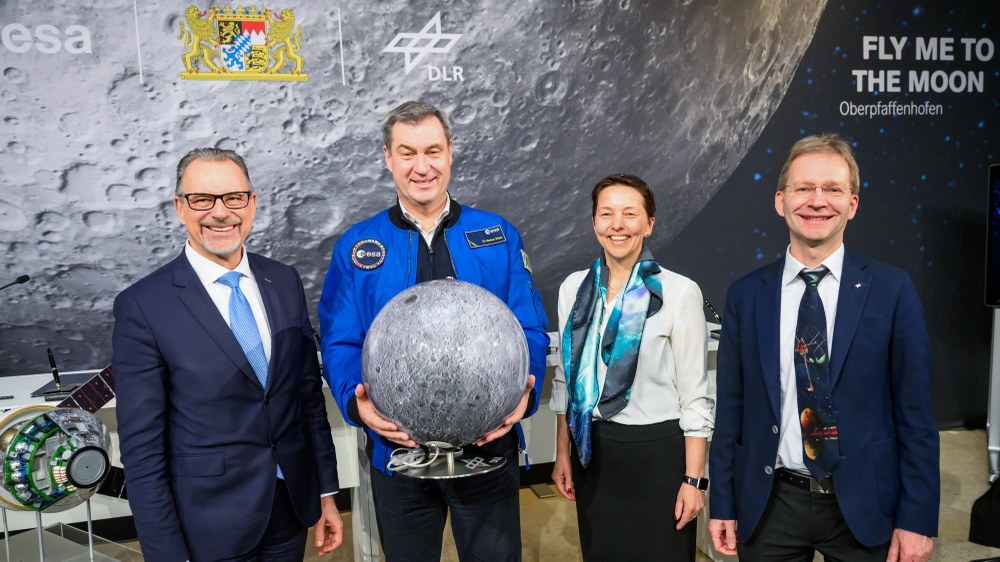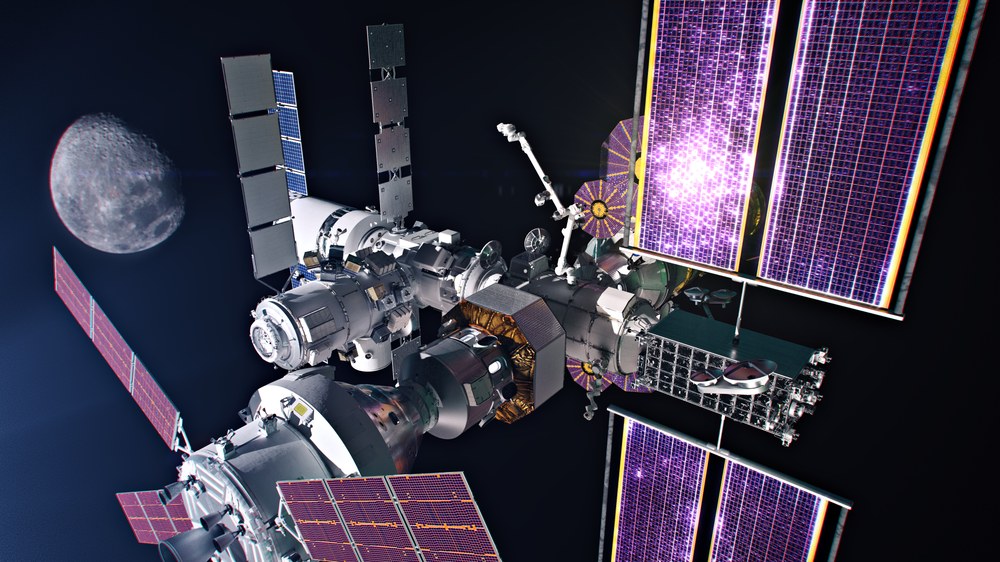European Moon Mission control centre to be located in the German city of Oberpfaffenhofen



- Europe is a key partner in the return to the Moon as part of NASA's Artemis programme.
- The European Moon Mission control centre will be built upon the existing Columbus Control Centre.
- The aim is to support future missions to the Moon and, above all, the operation of the Lunar Gateway from the European side.
- The DLR site in Oberpfaffenhofen has decades of tradition and expertise in operating human spaceflight missions.
- Focus: Spaceflight, exploration, Moon
The German Aerospace Center (Deutsches Zentrum für Luft- und Raumfahrt; DLR), the European Space Agency (ESA) and the Free State of Bavaria plan to establish the Human Exploration Control Center for future human spaceflight missions to the Moon in Oberpfaffenhofen, Germany. The Declaration of Intent was signed by Minister-President of Bavaria Markus Söder, DLR Divisional Board Member for Space Anke Pagels-Kerp and ESA Director General Josef Aschbacher and Head of DLR's Space Operations and Astronaut Training Felix Huber at the Bavarian State Chancellery. The aim of the cooperation is to expand the Columbus Control Centre – from where the operation of the space laboratory is controlled – into a Moon Mission control centre and further develop the operational concepts. A new building will also be constructed at the DLR site in Oberpfaffenhofen.
"Bavaria's Space Valley is booming. With ESA and DLR's Moon Mission control centre, Oberpfaffenhofen in Upper Bavaria is becoming the European Houston. Spaceflight is opening up completely new possibilities for us today. Bavaria will play a key role in the international race to the Moon. To this end, we are investing 33 million euros in infrastructure and operational concepts for missions to the Moon," said Minister President of Bavaria Markus Söder at today's signing ceremony. "For us and for NASA, the Moon is an intermediate step towards Mars and the search for life in space. At the same time, we are gaining a truly unique view of our planet from space – and achieving great benefits for humanity, for example in terms of technological progress and addressing pressing climate issues. With the Moon Mission control centre, Bavaria is entering a new era."
"The return of humans to the Moon opens up completely new possibilities for space research," emphasises Anke Kaysser-Pyzalla, Chair of the DLR Executive Board. "Today marks an important milestone in the successful history of space operations in Germany. The planned establishment of a control centre for missions to and on the Moon at the DLR site in Oberpfaffenhofen is proof of the trust in our work. Germany, Bavaria and DLR will continue to be an integral part of space exploration in the future."
"ESA is very pleased with the substantial and strategic commitment of Germany and DLR to Europe's space programme, particularly in the field of human spaceflight and exploration. The Free State of Bavaria has once again demonstrated its ambition and foresight in this area. We look forward to the next steps of this unique project, which will return humans to the surface of the Moon, with valuable support from Bavaria," says ESA Director General Josef Aschbacher. "This Declaration of Intent also demonstrates ESA's commitment to realising Europe's space ambitions and to expanding its presence in the Member States. And it shows Bavaria's forward-looking vision as a leading space hub."
Long-term presence on the Moon thanks to international collaboration
Preparations are underway for humanity's return to the Moon this decade with NASA's Artemis programme. Artemis will establish a permanent human presence on the Moon through international cooperation, and Europe is a key partner in this endeavour. Key European contributions include the European Service Module (ESM) – a mission-critical element of the Orion spacecraft – and the international Habitat I-HAB, which will be a central module of the planned Lunar Gateway orbital station.
As with the European ISS module Columbus and the associated Columbus Control Centre, the aim is to manage the operation of future European activities on the Moon from Europe. ESA has decided to build the Moon Mission control centre from the existing Columbus control centre at the DLR site in Oberpfaffenhofen. The control centre, officially known as the Human Exploration Control Center (HECC), will support astronautical missions to the moon and, above all, the European operation of the Lunar Gateway. In the long term, it will also be responsible for astronautical missions into the translunar region, for which AI-based methods are being developed. Ultimately, the goal of the Artemis programme is to prepare for a future crewed mission to Mars, by first returning to the Moon.
With substantial support from the Free State of Bavaria and funding from DLR, a new building for the planned Moon Mission control centre will be constructed at the DLR site in Oberpfaffenhofen in the medium term. ESA will bear the long-term financing of the operating costs of the Columbus Control Center and the Moon Mission control centre. This was confirmed by DLR, ESA and the Free State of Bavaria in today's Declaration of Intent.
Spaceflight expertise at the DLR site in Oberpfaffenhofen
The German Space Operations Center (GSOC) at DLR’s site in Oberpfaffenhofen already has decades of tradition and expertise in operating human spaceflight missions. The first major missions included the German Spacelab missions D1 and D2 with the US Space Shuttle and flights by German cosmonauts to Mir. In 2004, the Columbus Control Center was inaugurated as the operational hub for the European Columbus module on the ISS. This was followed in 2007 by the inauguration of the Galileo Control Center for the operation of the European satellite navigation system Galileo. DLR and ESA are now contributing their unique competence and expertise in space operations to this cooperation with NASA on the Artemis programme.
